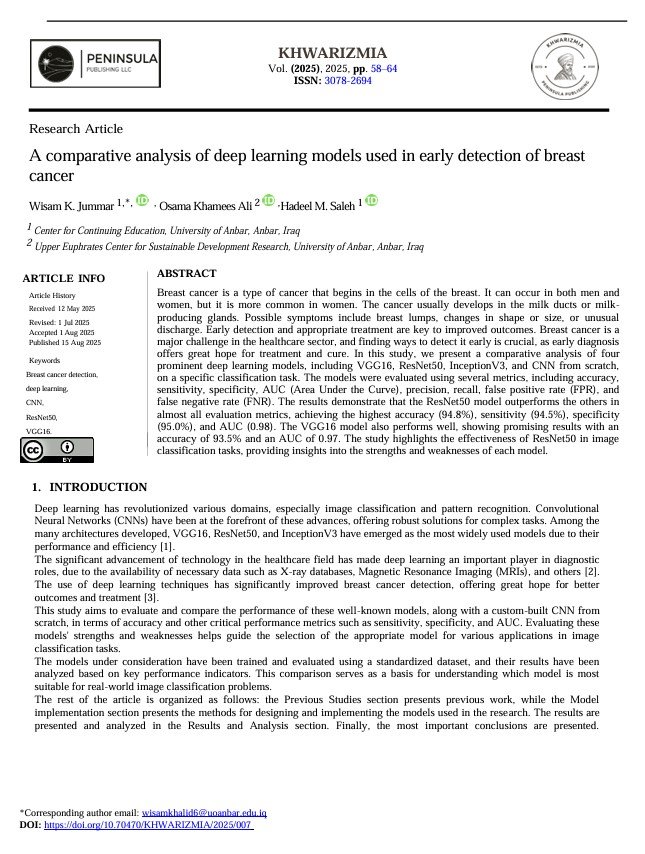A comparative analysis of deep learning models used in early detection of breast cancer
Main Article Content
Abstract
Breast cancer is a type of cancer that begins in the cells of the breast. It can occur in both men and women, but it is more common in women. The cancer usually develops in the milk ducts or milk-producing glands. Possible symptoms include breast lumps, changes in shape or size, or unusual discharge. Early detection and appropriate treatment are key to improved outcomes. Breast cancer is a major challenge in the healthcare sector, and finding ways to detect it early is crucial, as early diagnosis offers great hope for treatment and cure. In this study, we present a comparative analysis of four prominent deep learning models, including VGG16, ResNet50, InceptionV3, and CNN from scratch, on a specific classification task. The models were evaluated using several metrics, including accuracy, sensitivity, specificity, AUC (Area Under the Curve), precision, recall, false positive rate (FPR), and false negative rate (FNR). The results demonstrate that the ResNet50 model outperforms the others in almost all evaluation metrics, achieving the highest accuracy (94.8%), sensitivity (94.5%), specificity (95.0%), and AUC (0.98). The VGG16 model also performs well, showing promising results with an accuracy of 93.5% and an AUC of 0.97. The study highlights the effectiveness of ResNet50 in image classification tasks, providing insights into the strengths and weaknesses of each model.
Article Details

This work is licensed under a Creative Commons Attribution 4.0 International License.
